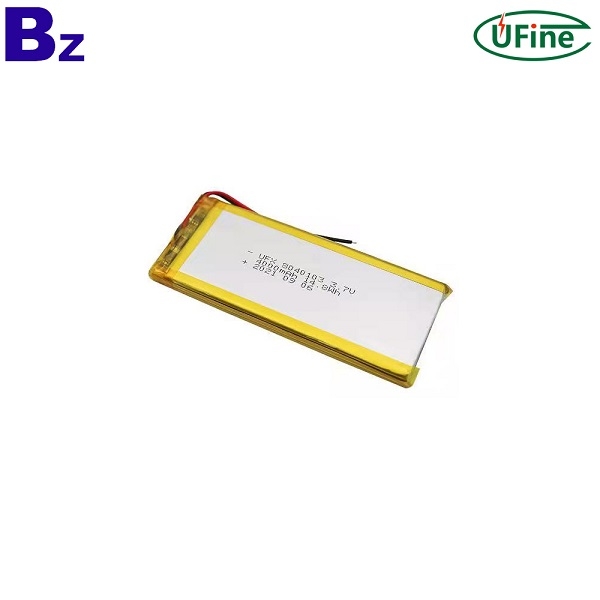Polymer lithium ion batteries can be divided into three categories:
1. Solid polymer electrolyte lithium ion battery.
The electrolyte is a mixture of polymer and salt. This battery has low ion conductivity at room temperature and is suitable for high temperature use.

2. Gel polymer electrolyte lithium ion battery.
That is, additives such as plasticizers are added to the solid polymer electrolyte to increase the ionic conductivity and enable the battery to be used at room temperature.
3. Lithium-ion battery with polymer cathode material.
Using conductive polymer as the positive electrode material, its energy is three times that of existing lithium-ion batteries, which is the latest generation of lithium-ion batteries. Due to the use of solid electrolytes instead of liquid electrolytes, compared with liquid lithium-ion batteries, polymer lithium-ion batteries have the advantages of being thinner, arbitrarily large, and arbitrarily shaped, and will not cause leakage, combustion, explosion, etc. In this case, the battery shell can be made of aluminum-plastic composite film, which can increase the capacity of the entire battery; polymer lithium-ion batteries can also use polymers as the positive electrode material, and the mass-to-energy ratio will be higher than that of current liquid lithium-ion batteries. Increase by more than 50%. In addition, polymer lithium-ion batteries have a higher operating voltage and charge-discharge cycle life than lithium-ion batteries.
Advantages of lithium polymer battery:
1. Good safety performance
The polymer lithium-ion battery adopts an aluminum-plastic soft packaging structure, which is different from the metal shell of a liquid battery. Once a safety hazard occurs, liquid batteries are prone to explosion, while polymer batteries will only swell at best.
2. The thickness is small and can be made thinner
Generally, liquid lithium batteries adopt the method of customizing the shell first, and then plugging the positive and negative electrodes, and the thickness is below 3.6mm, which has a technical bottleneck. Polymer batteries do not have this problem, and the thickness can be less than 1mm
3. Lightweight
The weight of the polymer battery is 40% lighter than the steel shell lithium battery of the same capacity specification, and 20% lighter than the aluminum shell battery.
4. Large capacity
The capacity of a polymer battery is 10-15% higher than that of a steel shell battery of the same size, and 5-10% higher than that of an aluminum shell battery.
5. Small internal resistance
The internal resistance of polymer batteries is smaller than that of ordinary liquid batteries. At present, the internal resistance of polymer batteries can be less than 35m, which greatly reduces the self-consumption of the battery.
6. The shape can be customized
The polymer battery can increase or decrease the thickness of the battery cell according to the needs of customers, and develop new battery cell models, which are cheap and have a short mold-opening cycle. Some can even fit the shape of the mobile phone, make full use of the battery shell space, and increase the battery capacity.
7. Good discharge characteristics
Polymer batteries use gel electrolytes, which have stable discharge characteristics and a higher discharge platform compared with liquid electrolytes.
8. Simple protection board design
Due to the use of polymer materials, the battery core will not catch fire or explode, and the battery itself has sufficient safety. Therefore, the protection circuit design of polymer batteries can consider omitting PTC and fuses, thereby saving battery costs. Polymer lithium ion batteries have great advantages in terms of safety, volume, weight, capacity, and discharge performance.


